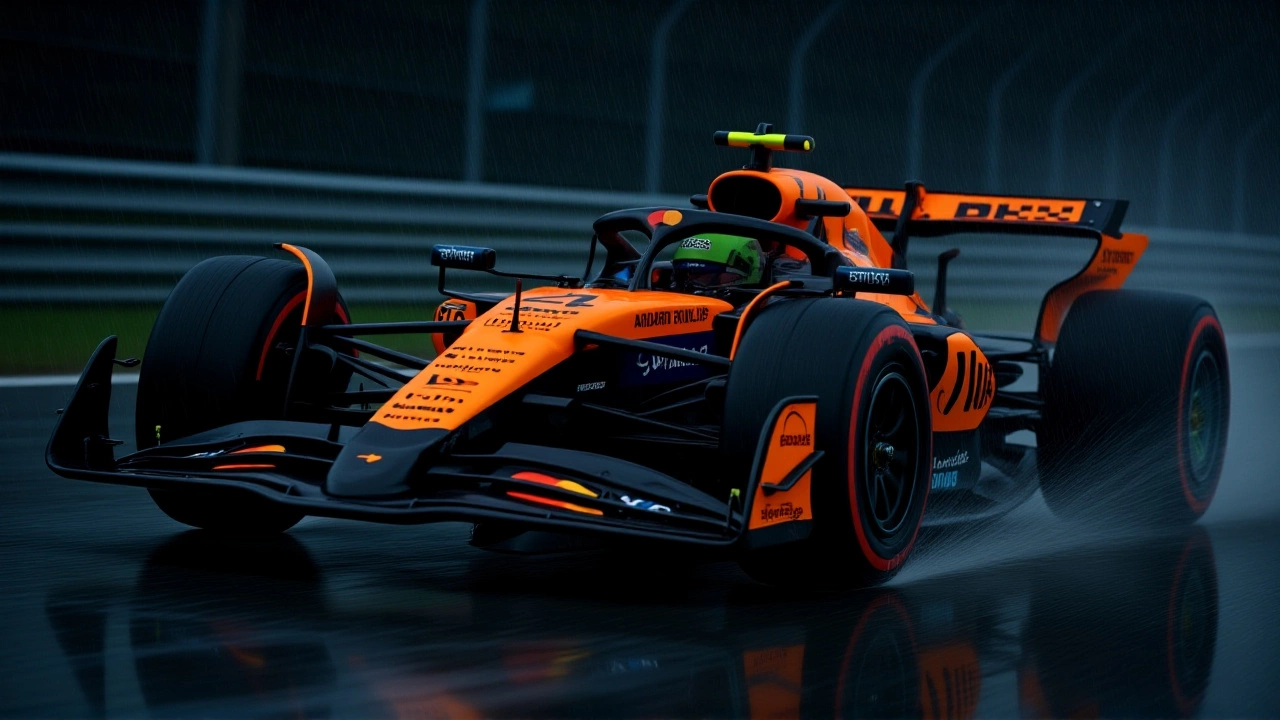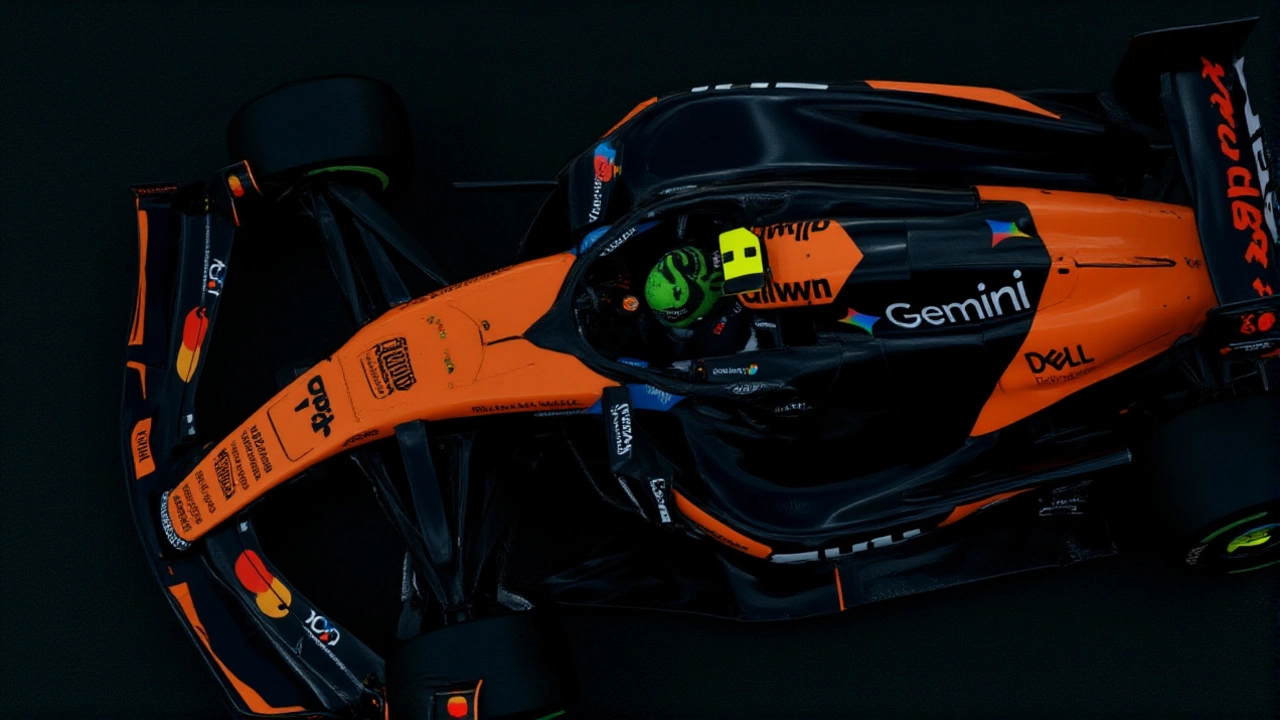Lando Norris Pole in Las Vegas Turns to Disqualification Drama Amid Championship Battle

When Lando Norris blasted through the damp streets of Las Vegas on Saturday night, clocking a blistering 2:20.137 to claim his seventh pole of the 2025 season, it felt like destiny was aligning. The 25-year-old British driver for McLaren Racing Limited had dominated qualifying on the Las Vegas Strip Circuit, a slick, unforgiving 6.120-kilometer street course lit by neon and chaos. He’d outpaced even Max Verstappen — the reigning king of Formula 1 — in the wet. But by Sunday night, the story had twisted into something far more dramatic: a disqualification that could rewrite the championship. The twist? Norris didn’t lose the race. He lost his result. And with it, his lead in the title fight.
From Pole to Purgatory
Norris started the 50-lap 2025 Las Vegas Grand PrixLas Vegas Strip Circuit from the front, the crowd roaring as the lights turned green. He got a clean launch — but overcooked the first corner. Verstappen, in his Oracle Red Bull Racing RB21, slipped past like a shark in the dark. By lap five, Norris was already under pressure from George Russell and Oscar Piastri, his own teammate. The race unfolded with mechanical drama: Russell reported failing power steering on lap 17; Gabriel Bortoleto and Lance Stroll crashed out early; Andrea Kimi Antonelli crossed the line fourth — only to be slapped with a five-second penalty for a jump start. Verstappen won. Clean. Dominant. 1:21:08.429. Norris finished second — on track.The Skid Wear Scandal
Less than two hours after the checkered flag, the FIA dropped a bombshell. The technical delegate’s report, published on the official F1 portal, confirmed something no one saw coming: both McLaren Racing Limited cars — Norris’ #81 and Piastri’s #04 — had skid blocks below the legal minimum. The regulation, TR Article 3.5.9 e), mandates a minimum thickness of 9 millimeters for the rearmost skid plate. Measurements showed both at 8.7 mm. Just 0.3 millimeters. Enough to be illegal. Enough to erase two race results. "The measured thickness was less than 9 mm on both cars," the FIA statement read. "I am referring this matter to the stewards for their consideration." It wasn’t a technicality. It was a breach of a rule designed to prevent teams from gaining aerodynamic advantage by wearing down the underbody to create more downforce. Teams routinely monitor skid wear — but McLaren’s data, submitted ahead of the race, apparently didn’t flag the issue. Why? No one knows yet. The team has remained silent. But insiders say the cars were running with unusually aggressive rear ride heights all weekend — a setup that could accelerate skid wear. "It’s not about the margin," said one former FIA technical official, speaking off-record. "It’s about intent. Did they know? Did they push it? Or did they just misread the wear pattern?"Championship Fallout
Before the disqualification, Norris led the Drivers’ Championship with 366 points — 42 ahead of Verstappen and 30 ahead of Piastri. Verstappen sat at 324. If Norris and Piastri are disqualified, Verstappen inherits Norris’ 25 points (for second place), pushing him to 349. That means Verstappen would be just 24 points behind Norris — not 42 behind. And Piastri? He’d be dropped from 336 to 0. Verstappen would leapfrog him entirely. "It’s not just about points," said F1 analyst and former driver David Coulthard in a post-race interview. "It’s about momentum. Norris was on the cusp of his first title. Now? He’s fighting for survival. And Verstappen? He’s got a lifeline." The stakes couldn’t be higher. With only two races left — Miami and Abu Dhabi — plus a final Sprint event, every point is a landmine. If Norris is stripped of his result, he’ll need to win both remaining races and hope Verstappen scores zero. Even then, it’s a long shot.
McLaren’s Silence Speaks Volumes
McLaren has not issued a public statement. No apology. No explanation. No hint of appeal. That’s unusual. Teams usually fight tooth and nail in these situations. The silence suggests either internal panic — or a grim realization that the evidence is too clear to contest. The FIA’s technical delegate doesn’t make mistakes. His measurements are precise, repeatable, and audited. This isn’t a subjective call. It’s physics. There’s also the matter of Piastri. The 23-year-old Australian was already under scrutiny after a controversial overtake on Liam Lawson during the race. Now, his own disqualification adds another layer. Is this a team-wide setup flaw? Or did one car’s setup bleed into the other? The stewards will have to untangle that.What’s Next?
The FIA stewards are expected to rule by Tuesday, November 26. The decision could come down to whether the infringement was intentional — a deliberate violation — or an oversight. If it’s deemed unintentional, they may only strip the points, not impose additional penalties. But if they find evidence of deliberate non-compliance — say, if telemetry shows the team knew the skid wear was below limit and chose to race anyway — Norris and Piastri could face race bans or even points deductions in future events. For now, the championship hangs by a thread. Verstappen, the man who won the race, now waits to see if he’s also won the title. Norris, the man who earned pole, waits to see if he’s lost everything.
Historical Echoes
This isn’t the first time skid wear has caused chaos. In 2007, McLaren Racing Limited was stripped of constructor points after the "Spygate" scandal. In 2021, Red Bull Racing narrowly avoided disqualification after a rear wing irregularity in Monaco. But never before has a team lost two cars in the same race for skid wear — and never has it happened in the final stretch of a title fight. The 2025 season has been defined by razor-thin margins: 0.02 seconds in Qatar, a tire degradation surprise in Singapore, a rain-soaked win in São Paulo. But this? This is different. It’s not about speed. It’s about rules. And in Formula 1, sometimes the slowest car wins — if it’s the only one that followed them.Frequently Asked Questions
How does the skid wear rule work in Formula 1?
The skid wear rule (TR Article 3.5.9 e)) requires the rearmost skid block on an F1 car to remain at least 9mm thick. These blocks, made of a carbon-fiber composite, sit under the car’s rear diffuser and prevent excessive wear that could alter aerodynamics. Teams monitor wear closely, and the FIA uses laser scans and physical measurements during post-race inspections. Violations are rare but serious — they suggest teams are pushing the car’s underbody too low for extra downforce, which is illegal.
What happens if Lando Norris is disqualified?
If Norris is disqualified, his 25 points from second place vanish. That drops his championship total from 366 to 341. Verstappen, who finished first, would gain those 25 points, moving from 324 to 349. Norris’ 17-point lead over Verstappen would shrink to just 8 points. With two races left, Verstappen would be within striking distance — and Piastri, now at zero, would be out of title contention entirely.
Could McLaren appeal the decision?
Yes, but it’s unlikely to succeed. The FIA’s technical delegate’s measurements are considered final unless new evidence emerges — like a calibration error in the measuring tool. McLaren would need to prove the skid wear reading was inaccurate, which is nearly impossible given the FIA’s triple-check system. Even if they appeal, the stewards can only overturn if there’s procedural error — not if they disagree with the science.
Why didn’t McLaren notice the skid wear was too low?
It’s unclear. Teams track skid wear with sensors and visual inspections after every session. But with the Las Vegas circuit’s abrasive surface and wet conditions, wear can accelerate unpredictably. McLaren may have assumed their 8.7mm reading was still within tolerance — or they may have prioritized performance over compliance. Either way, the team’s lack of transparency suggests either negligence or a miscalculation they didn’t catch in time.
How does this affect Oscar Piastri’s future with McLaren?
Piastri’s disqualification adds pressure to an already tense team dynamic. He’s been outperformed by Norris this season, and now he’s tied to a scandal that could cost the team dearly. While McLaren has publicly backed both drivers, internal sources suggest Piastri’s contract renewal — due in early 2026 — may now hinge on how he handles this crisis. If he’s seen as a liability, the team might consider alternatives.
What’s the worst-case scenario for McLaren?
The worst-case scenario? Norris and Piastri are disqualified, and the FIA imposes additional penalties — like a points deduction in the next race or a ban on aerodynamic upgrades. That could cripple McLaren’s competitiveness heading into Miami and Abu Dhabi. Worse still, if the FIA finds evidence of deliberate rule-breaking, the team could face a constructor points penalty, jeopardizing their second-place position in the constructors’ championship — a position they’ve fought hard to earn this season.